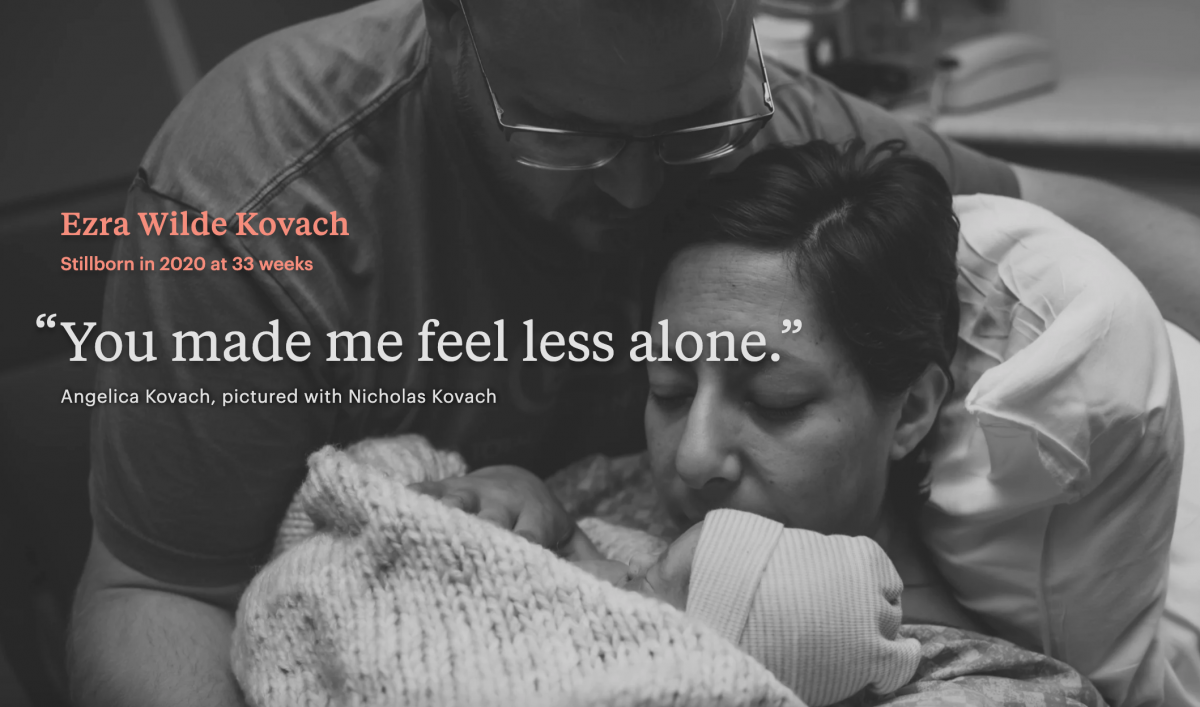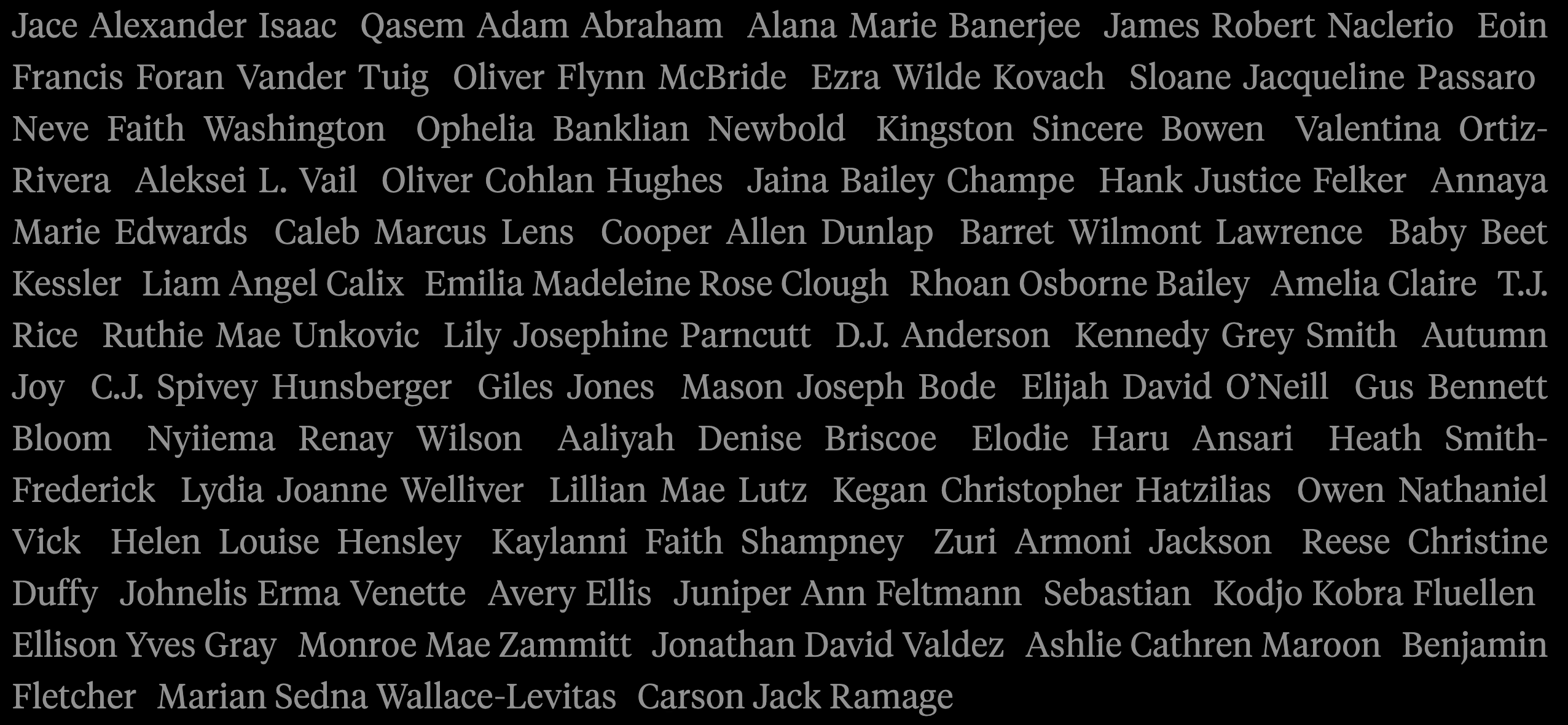ProPublica remembers children lost to stillbirth through interactive memorial
Every year in the United States, there are more than 20,000 stillbirths, when expected children die at 20 weeks of pregnancy or more. For many parents, their losses can feel invisible, as they worry that their children and their names will be forgotten.
In an ongoing series called “Stillbirths,” ProPublica examines the institutional failures that led to this stillbirth crisis. The most recent story in the series, “Still Born,” highlights the lived experiences of parents whose pregnancies ended with stillbirth. Through interactive scrollytelling, “Still Born” memorializes 60 children by sharing their names and stories––the approximate number of babies that die from stillbirth in the U.S each day.
Storybench spoke with a main contributor to this series, ProPublica reporter Duaa Eldeib, about how she created the most recent addition and the power that social media has to unite families who have been affected by a stillbirth.
The following interview has been edited for length and clarity.
How did the “Stillbirths” series begin?
Eldeib: Around 2022, I was working on a series of stories around the medical collateral damage of the pandemic. I did this story about cancer and how a surge was being seen in undiagnosed, advanced cancers because people weren’t going to hospitals for screenings since they feared contracting COVID.
A doctor I talked to mentioned in passing that they were also worried about stillbirths. I was surprised by this. I was like, “This is 2022, and we’re in the United States. It can’t be that big of a problem.” But then I decided to Google “stillbirth,” and I was shocked and enraged by what I found. That’s absolutely when I knew there was a story here.

The innovative design in the most recent article of the “Stillbirth” series varies from the other articles. Why was there a pivot to this visual portrayal?
The first year of stories was laying the foundation of the project. Because so much about stillbirths was unknown, I had to start by shattering the silence and bringing hard accountability by establishing that this is undoubtedly a problem and affecting all of these women across the country. But the most recent article idea came from an interview with a mother.
Because this was such an emotionally difficult topic, I knew I was only going to be able to focus on a handful of my interviewees. I started all my interviews by explaining that it was very unlikely that I was going to end up using their name and quoting them in the story. But speaking to me would really help inform my reporting and allow me to write with authority, so I’d appreciate it if they were still comfortable moving forward with the interview.
There was this woman named Rachel, and we had a really amazing interview. When we were finished, I apologized to her again — what she shared with me was eye-opening, but I wouldn’t be able to quote her.
She said, “Look, for stillbirth parents, we don’t really care about our names being out there. We care about our child’s name being out there because they’re the ones who are forgotten. We don’t get birth certificates for them. So if there’s any way to just acknowledge their names, that’s what’s going to mean a lot to us.”
How did you select content for this memorial?
We wanted an array of photos, so the viewer wasn’t seeing the same thing over and over. We selected photos we thought were compelling, but that also showed a range of emotions, experiences and facets of the story.
All families answered all the prompts, so when we went through and selected those we thought were best. Not everything fit perfectly. Some families were revisited and asked if they have a photo that better matches their quote. For example, the “You gave me purpose” prompt didn’t always have a photo that matched. It was a very iterative process, with a lot of back and forth to get the perfect final product.

What role has social media played in this piece?
We knew that once published, we were going to hear from more families who were also going to want to participate. But we didn’t have the bandwidth to continually update the memorial and had already limited it to 60 stories. So we thought, “How can we expand this in a way that is realistic?” Putting it on social media for other families to participate lets them be a part of the process without having to come back to us to republish.
Where do you see the ‘Stillbirths’ series going next?
It is going to live on with social media. I think the project itself has a timeless element, unlike stories that can feel old after a year or two. The last thing we’re hoping to do with “Still Born” is a physical installation. We’ve submitted it to various designers and would really love to see if there’s a way to translate it off the web and into real life.





